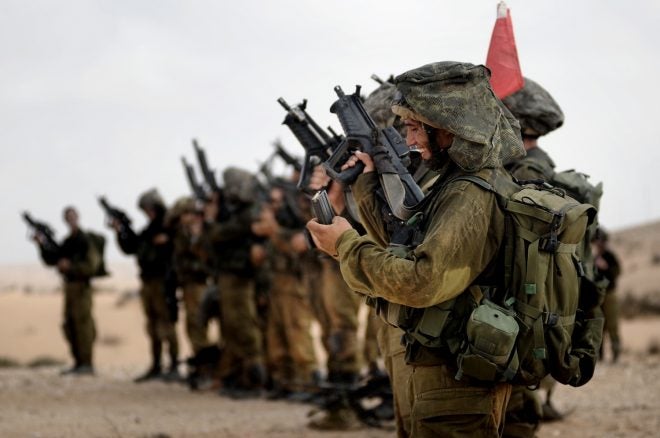Recently, I wrote an article about one negative aspect of bullpups which is caused by their much-touted rearward balance. Even though its scope was extremely limited, this article caused a lot of discontent in my comments section, and many of my readers expressed a feeling that I was trying to slam bullpups or otherwise promote conventional rifles as the ideal weapons. In this post, therefore, I wanted to address the underlying issue behind this: How do I really feel about bullpups? Put differently, which do I think is better, bullpups, or conventionals?
Now that I have you here, I want to tell you something: This is the wrong question to ask. These two paradigms – the bullpup and the conventional – are a mess of tradeoffs and contrasts too numerous to properly account for. Even if one did account for them, and found one or the other to have more benefits than negatives, it would be completely unconvincing to someone who favored the other paradigm. It’s a simple matter in an argument to just weigh more heavily those aspects which favor your preferred type over the other. If you believe that oranges are better than apples, for example, you can just say “well, taste and texture are the most important things; how easy it is to eat is decidedly secondary.” Who is to say you are wrong? Even if the tradeoffs themselves are well-established as many are for bullpups versus conventionals, how those tradeoffs are perceived is entirely subjective. Since both weapons have been used successfully in combat, and there are no instances of armies equipped with one losing or suffering in engagements versus the other which can be attributed to the superiority of the layout of their rifles, these perceptions from each side color the entire debate. I don’t really believe it is subjective whether one type is better than the other, but it might as well be.
It is better to instead talk about the very real, tangible, and unequivocal state of bullpups on the military market today. In lieu of hashing over pros and cons, I think we can make a few broader observations that should help improve the focus and constructiveness of future discussions about bullpups:
- Bullpups are doing poorly on the military market. I plan to make the case that this is true in a future article, but for now, take it as my opinion that this should be an item of concern for bullpup advocates, not an item for dismissal.
- Most major manufacturers do not seem to think pursuing bullpup designs are a good investment. Where are all the production military/LEO bullpups? Many legacy bullpup manufacturers (e.g., Steyr, FN) are dropping them like a bad habit, and the only “new” designs on the market are updates of legacy ones (QBZ-95-1, EF88/F90 Atrax). In many cases those manufacturers are introducing brand new conventional rifle designs, too (e.g., NAR-556, NAR-762, RS-556). There does not seem to be the divide between bullpups and conventionals that we might expect of two different but equally valid styles. In fact no new military bullpup design exists which doesn’t have direct roots back to the Cold War/pre-GWOT bullpup concept. This is pretty concerning!
- Any future ammunition concept that relies on having a bullpup rifle with a long barrel will be a complete non-starter. The Infantry School at Fort Benning essentially rejects bullpups in general, and for most bullpup advocates concepts like this sacrifice what is perceived as the primary advantage of the bullpup: Shorter overall length. Regardless of what rifles become popular in the future, any new round should be designed for 14.5-16.5″ barrels, at the longest.
- Bullpups have demonstrable disadvantages versus conventionals. This doesn’t mean they are unusable or that they have no advantages, but it does mean that arguing bullpups are “just better” is a bit of kool-aid drinkery that won’t get one very far in the conversations that matter. Whether you think it’s true or not, a lot of people really, really do not. A tack of “here’s why the benefits are worth the tradeoffs” would be much more effective at convincing skeptics.
I think the conclusion we can draw from these four points is this: Designers and marketers of future bullpup rifles have a lot of work to do. I touch on this a little bit in What’s Killing the Bullpup (and How to Cure It), but I should mention that this conclusion goes beyond whether any given reader feels satisfied with modern bullpup, and acknowledges directly the fact that, put simply: Bullpups aren’t doing very well.
Now, in my opinion much of the blame for this can be attributed to the fact that current bullpup designs are fairly uncreative, being essentially nothing more than refinements of first-generation designs from the 1970s and 1980s. It doesn’t look like manufacturers are willing to spend their own R&D dollars to innovate in the bullpup market significantly, either, which could be disastrous for the concept. That then means whoever wants to solve the “bullpup problem” (and I certainly hope someone does) will need to undertake a true labor of love and passion to do so. The pursuit of the perfected bullpup rifle is something I definitely encourage, and it’s my hope that what I’ve written on the subject so far is helpful to anyone who chooses to go down this road.
I plan to continue writing about the bullpup rifle concept, of course. Future subjects will include taking a closer look at some of the observations listed above, as well as guides for what I feel could be improved in current bullpup designs. Regardless of whether you are a bullpup fan or critic, I plan to have something interesting for you, so stay tuned.
 Your Privacy Choices
Your Privacy Choices